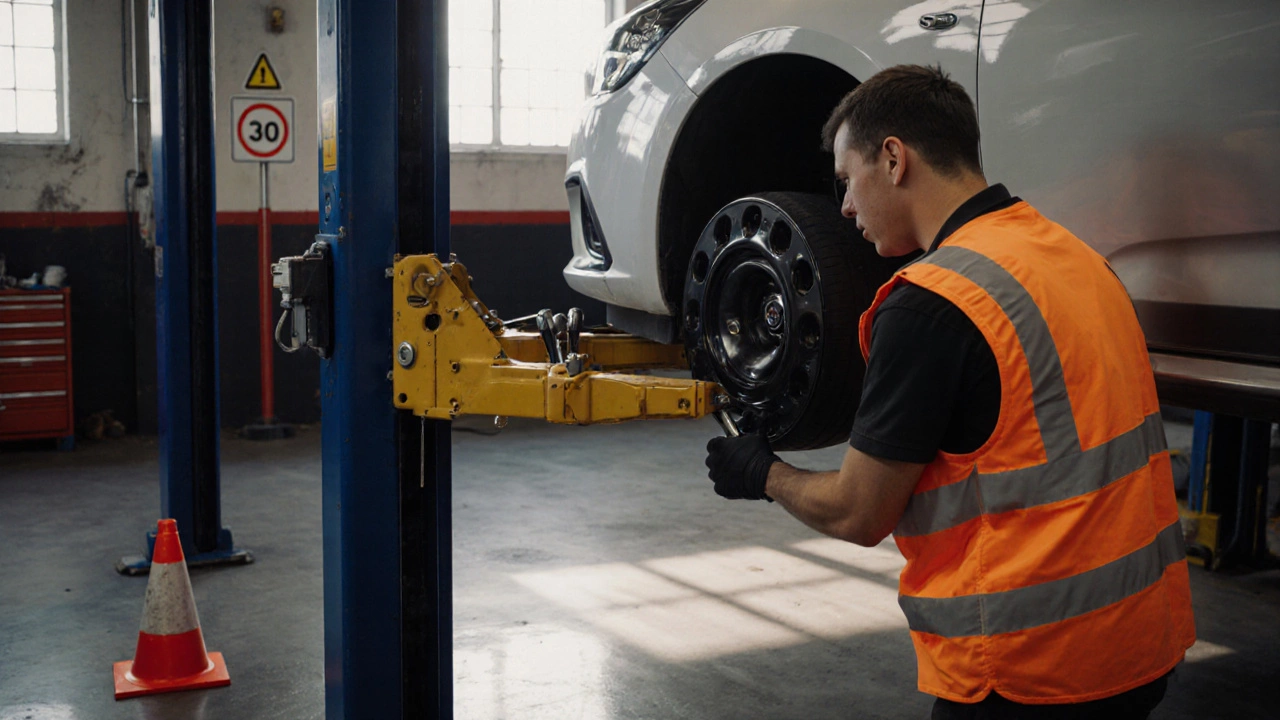Wheel Offset: What It Is and How to Pick the Right One
Ever wondered why some wheels sit flush with the fender while others stick out or tuck in? The secret is wheel offset. It’s the distance between the wheel’s mounting surface and its centreline, and it decides how the tyre sits relative to the suspension. Get the offset right and you’ll avoid steering wobble, uneven tyre wear, and that annoying scraping sound.
Understanding the Numbers
Offset is measured in millimetres and comes in three flavors: positive, negative, and zero. Positive offset means the mounting surface is toward the outside of the wheel – most modern cars use this because it keeps the tyre tucked inside the wheel arch. Negative offset pushes the mounting surface toward the inside, making the wheel stick out; it’s common on older trucks and some performance setups. Zero offset sits right in the wheel’s centreline. A quick rule of thumb: if the number is higher, the wheel sits deeper inside the wheel well.
Choosing the Right Offset for Your Ride
Start by checking the factory spec on your car’s sticker or in the owner’s manual. That figure is the baseline that the engineers designed for. If you’re swapping wheels, try to stay within ±5 mm of the original value to keep clearance with the brakes, suspension, and inner fender. Need a wider stance? You can use a small spacer, but remember that spacers change the effective offset and may affect bearing load.
Next, measure the space you have. Look at the gap between the tyre sidewall and the inner fender when the wheel is seated. You need at least 3–5 mm of clearance for turning and bumps. If the tyre rubs, either lower the offset (more negative) or roll the wheels back with a spacer. Keep an eye on the brake caliper – a deep positive offset can push the wheel against the caliper, causing heat issues.
Online offset calculators make the math easy. Input the wheel width, bolt pattern, and desired stance, and the tool will tell you the exact offset you need. When you order new wheels, most sellers list the offset as a range (e.g., +35 mm to +45 mm). Pick a value that stays inside your clearance window. If you’re unsure, a +35 mm offset is a safe middle ground for most passenger cars.
Finally, do a test fit before driving off. Put the wheel on, tighten the lug nuts to spec, and spin it by hand. Check for any contact with the fender, suspension, or brake components. Take the car for a short drive and listen for clunking or vibration. If anything feels off, double‑check the offset and clearance.
Getting wheel offset right isn’t rocket science, but it does save you from costly repairs and a wonky ride. Use the factory spec as a guide, measure your clearance, and use a calculator if you’re mixing widths. With the right offset, your wheels will look good and perform safely.

Wheel Spacers: Are They Safe for Everyday Driving?
A practical guide on wheel spacers, covering safety, installation steps, legal limits, and alternatives for daily drivers.

Do Wheel Spacers Increase Tire Wear? Causes, Geometry, and Safer Alternatives
Do wheel spacers wear out tires? Learn when they do, when they don’t, the geometry behind wear, safe install tips, Aussie legal limits, and smarter alternatives.